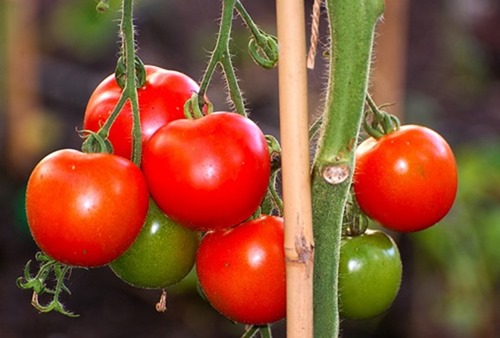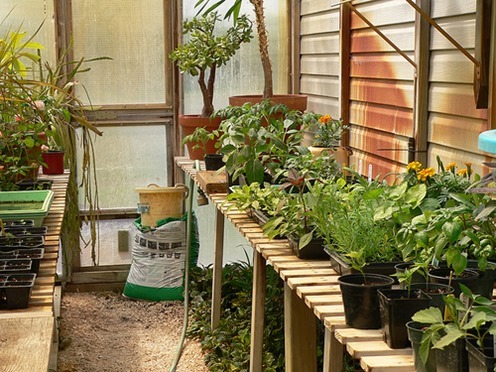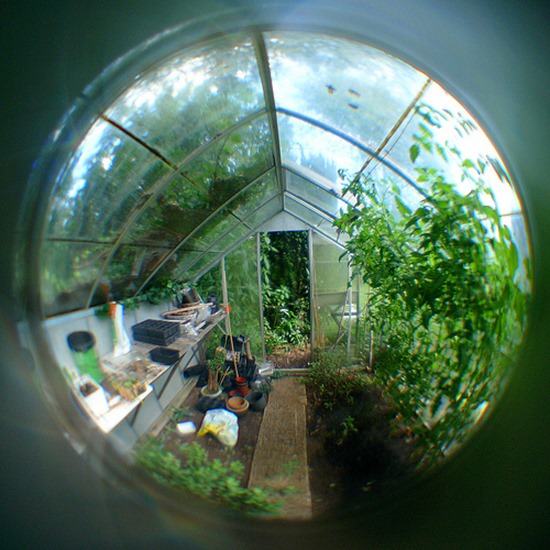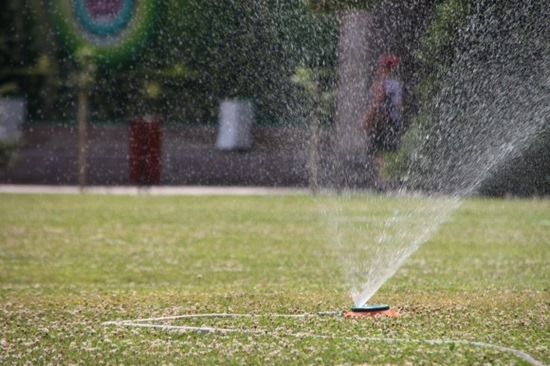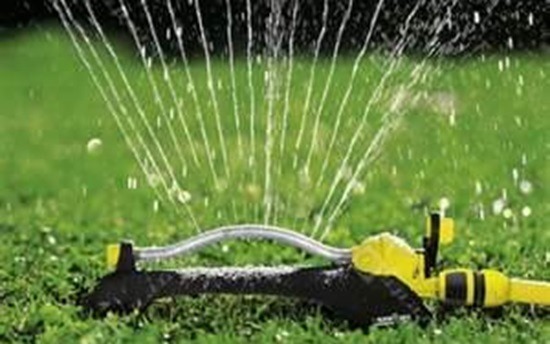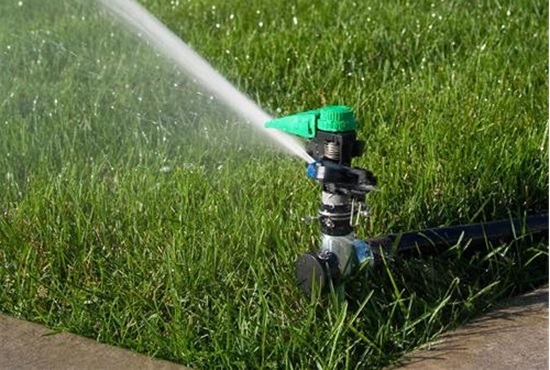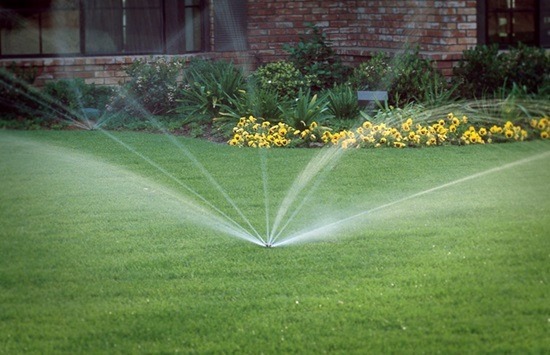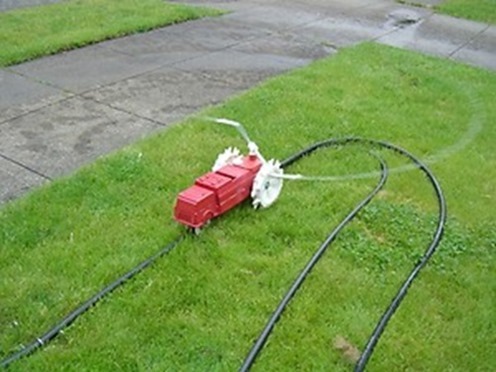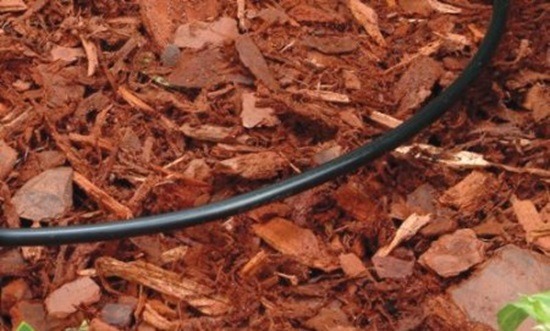Tomatoes: Upside down, Ground, and Self Watering Container
9.7 years ago DIY, self watering, tomato, upside down planter
On of a common questions I still get is, do you still grow tomatoes upside down? Does that really work better than just planting in the ground?
Well I decided to do a little experiment and start several tomato plants from seeds and grow two in an official Topsy Turvy planter, two in the ground with fertile soil, and one in a homemade self watering container.
Each plant was placed in the same area in my yard and was watered the same amount at the same time. About every 10 days I would also water with a diluted solution of water with fish emulsion. You can see some results in the pictures below.
Upside Down Planter
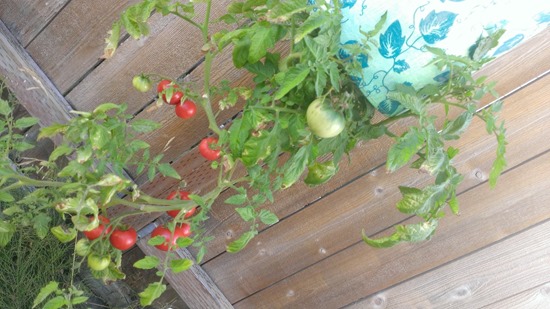
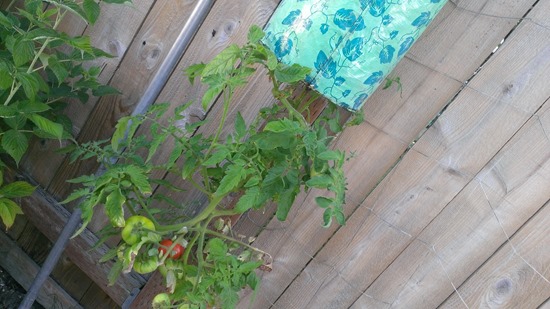
Self Watering Planter
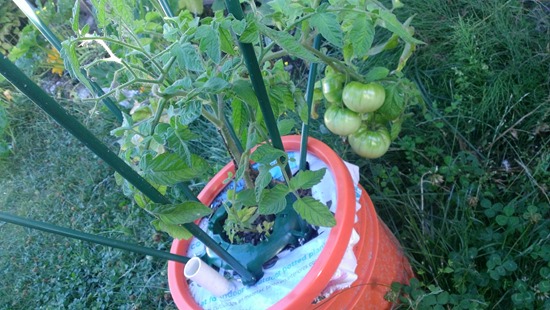
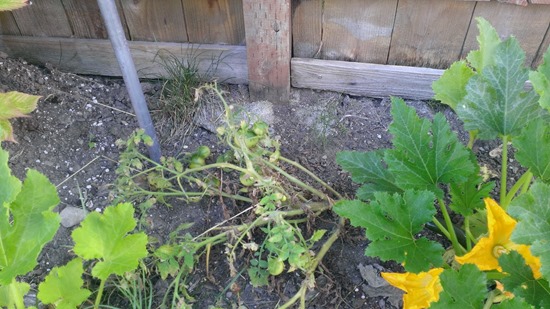
Ground
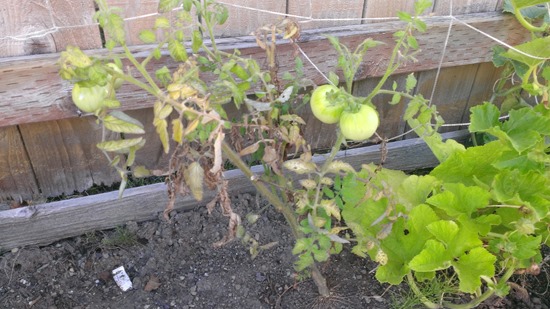
Overall the upside down planters by far are having the best yields getting fruit 3 weeks before other plants. The self watering planters had the healthiest looking plants though yields were decent though taking their time. The plants in the ground are having some serious issues though still producing some tomatoes though doubt the plant will survive to have red fruit.
After this and previous years results I really don’t think I will be planting tomatoes in the ground in the near future…
Multiple rain barrels hooked up with common garden hose connectors
10.2 years ago cheap, DIY, rain barrels
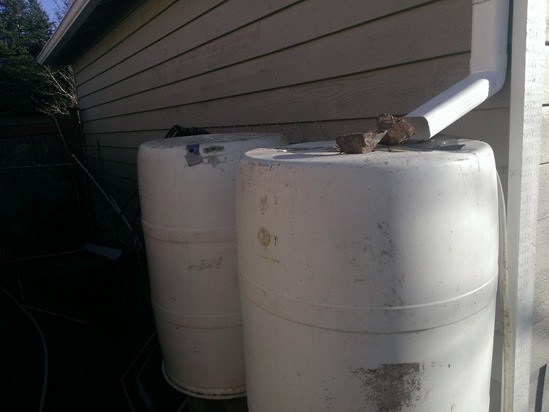
Last summer I setup some cheap rain barrels which I describe in this post which worked great though had one major flaw. If you wanted to do some maintenance or add any new barrels you would have to literally have to saw them apart. This time around I came up with a design that is not only simple but can be done with almost no tools and uses common garden hose connectors.
Materials needed
- 55 gallon food grade plastic barrels X 2
- 2 way garden hose splitter (plastic will work but recommend metal for longer life)
- Old garden hose
- Male garden hose mender
- Teflon plumbers tape
- Cinder Blocks (at least 2 for each water barrel…I went with 6 for each barrel for additional water pressure)
- 4”X4” Lumber (8 foot)
- Screwdriver
- Utility knife
Construction
Knowing Pascal’s principle I wanted to take advantage of all the height I could safely get. I chose to elevate my rain barrels by taking cinder blocks 2 wide and 3 high. I then place two 4”X4” lumber cut at 4 foot lengths to provide a few additional inches of height, but also provide some room for my connections under the barrels.
Now I have a firm foundation not it is time to get these barrels hooked together so I can get maximum water pressure and access to the water in all of the barrels.
The caps on the barrels (pretty common) I picked up had a nice feature of including some nice threads on the inside of them. This provides me a nice 1 inch thread I can get a nice tight seal. The only problem these are sealed closed.
Not having a drill bit just under one inch in diameter I used a pocket knife to carefully cut the inner cap off being careful to not harm the threads.
Whats also great about this threads is they match that of standard garden hose connections. So my taking the male end of one of the garden hose splitter with a 4-5 wrappings in Teflon plumbers tape and screw it into the cap you opened up in the previous step. Repeat this process for all of your remaining rain barrels.
Note: This addition of Teflon plumbers tape is technically optional should be water tight without this but seems like a cheap insurance for the alternative of having a slow leak under your barrels.
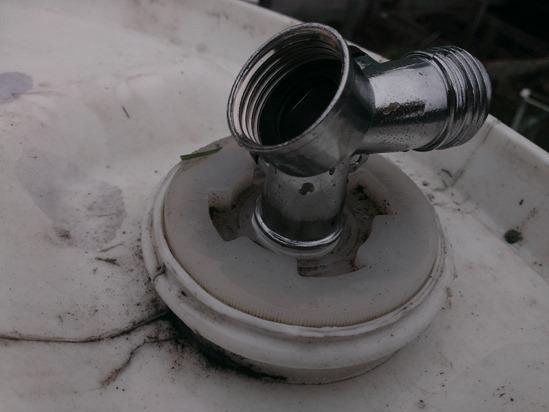
Next add one end of male the garden hose to the end you typically would hook up to your faucet and hook the other end (other male end created using Male garden hose mender mentioned above. For this I cut an old garden hose which had a couple leaks in it to proper length since obviously 25 feet of hose between barrels would be some serious overkill.
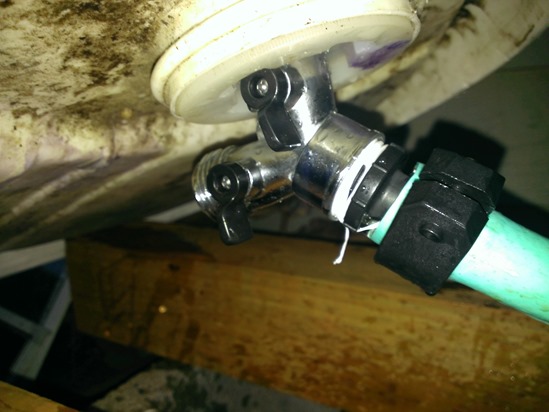
If you have more than two rain barrels you can then use short lengths of typical garden hose (one male/one female) and link them together in a similar manner.
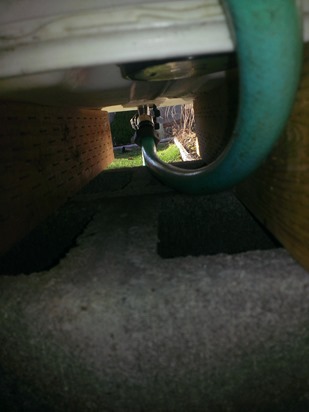
For overflow I went with a pretty simple option of drilling a hole and manually threading a pipe fitting that attached to piece of tubing (easy finds at your local home improvement store)
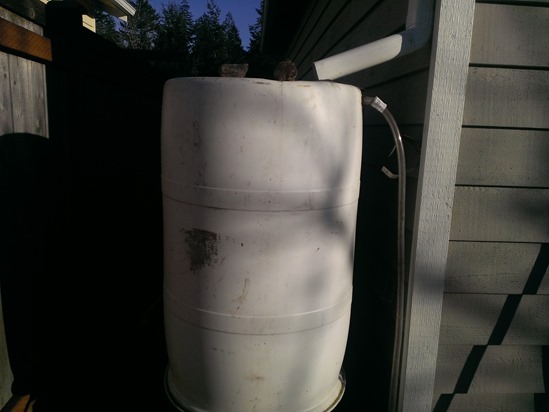
Better picture of overflow…this tube goes right down to the drain the water used to flow down with the drain spout. So once all the barrels are full all the excess water will just flow down here.
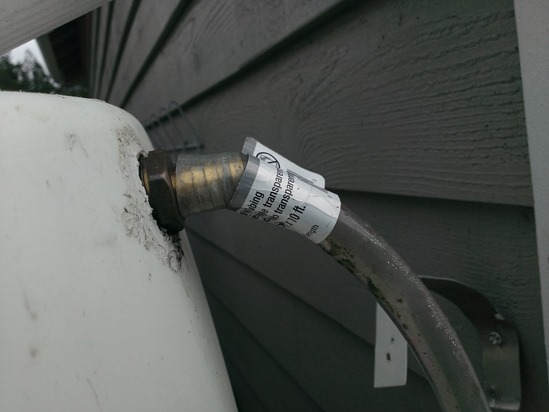
Speaking of the drain spout I used some cheap vinyl drain pieces to redirect the water into a 3 inch hole I cut in the top of the barrels.
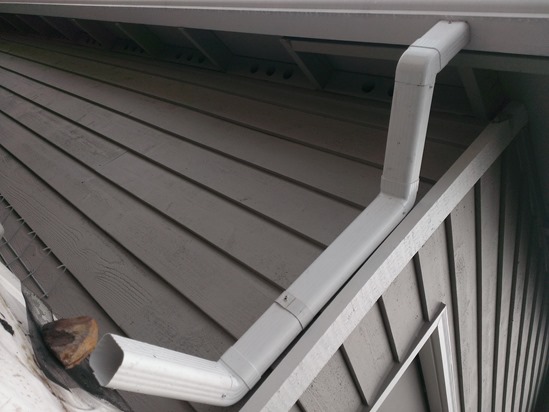
I added a piece of screen to filter out the leaves and little piece of sediment that may come from the roof. I also screwed on a plastic lid I scavenged from the recycling bin which I cut a matching 3 inch hole into. This had a decent lip on the lid to help direct the water into the barrels when the rain starts coming down pretty hard.
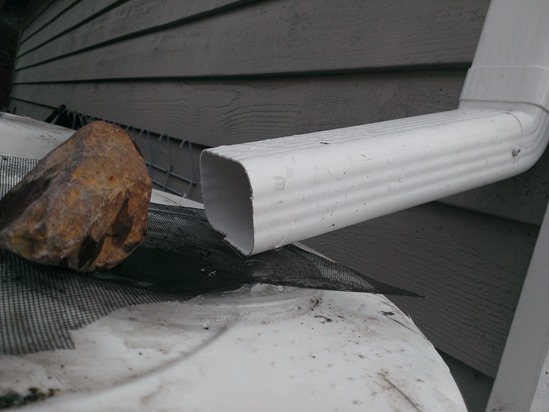
Overall I really like how this came out. Not only does this allow me to easily add new rain barrels and I decide to add them but I also with the valves on the 2 way garden hose splitter I can easily start/stop flow from any barrel and do maintenance on another barrel without having to draining all of the water from the system.
How to make a tomato/cucumber cage
10.8 years ago cheap, cucumbers, DIY, tomato, trellis
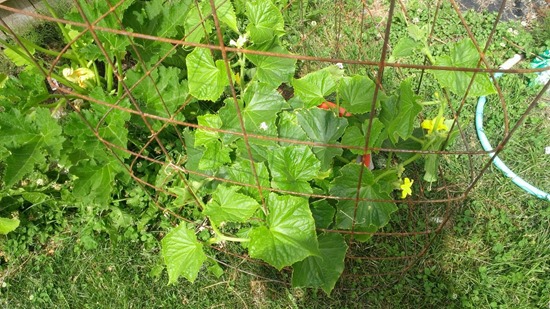
In my area, the tomatoes and cucumbers plants are starting to take off and are in desperate need of some additional support. After walking the aisles of my local home improvement store I couldn’t make myself pay the $15-30 for a single support. Sure they look real pretty but at that price it could take a few seasons to even break even for an inexpensive vegetable like cucumbers.
For this build I wanted something that was inexpensive and would be strong and hold up for years to come. My first thought was cattle panels they are made of 1/4 inch steel. You can find them even thicker if you want, but this size was perfect for my needs and is much easier to work with.
Note: For those observant people out there you may see some similarities between the cucumber/tomato cage and my pea tower…well they are the same thing and in my case I even reused my pea trellis tower to use with my cucumbers when my peas stopped producing. So this is a great multi-tasker in the garden.
Construction
First I started with a 4 foot by 8 foot cattle panel which ran me about $6 at Home Depot.

Given the panel had sharp edges and my largest vehicle is a pretty new minivan with leather seats I planned ahead and started the construction in the Home Depot parking lot (yeah got a couple funny looks) Taking a piece of scrap lumber I brought with me, I placed it on the 5th cross section on one side and bent it up until it was perpendicular to the ground then repeated with the other side.

The I carefully placed the bent panel into my minivan and brought it home for the remaining construction which pretty much was adding a zip tie in the middle to make a isosceles triangle and then tucked both ends to interweave with the other open side of the tower.
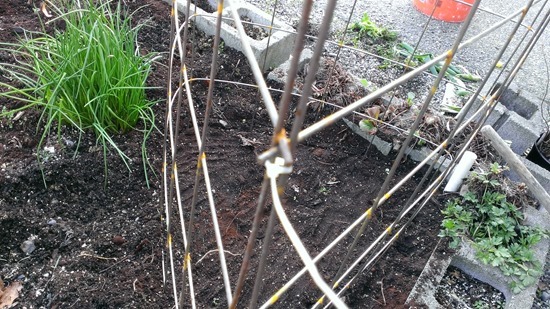
Next I used some pliers to not have as many sharp pointy parts for my kids…probably more likely me to poke myself with and also filed down any ends that seemed overly sharp. If you happen to have an angle grinder this would be a great way to quickly take care of these

Now you have everything constructed all you need to do is carefully place this over your tomato or cucumber plants and they shouldn’t have any problems climbing up this structure. I also just used my foot to push the pointy ends on the bottom into the ground to provide some additional support.
You might also see in this case I am also using a self watering 5 gallon bucket for my planter for this cucumber plant which has been working awesome. Just top off the water every few days and every two weeks include a little fish fertilizer in with the water to keep the growth vigorous.
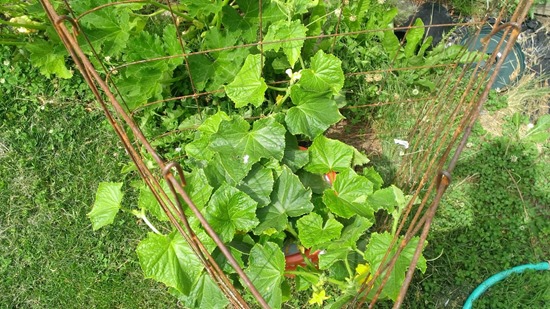
Due to the size and shape of this design it should remain very stable the entire season and many more to come and at just $5-6 a piece and about 5 minutes of work a great value as well.
How To Make A Tire Planter
11.1 years ago cheap, container garden, DIY, guest post, planter, tires
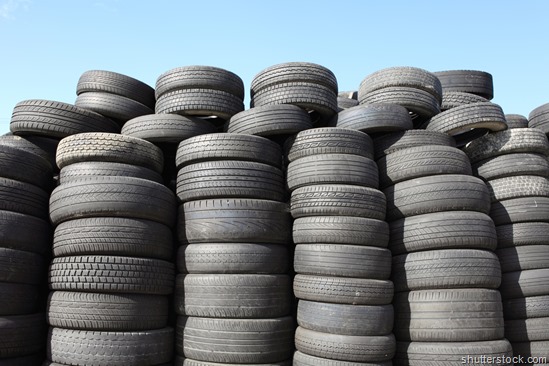
Used tires are a difficult waste product to dispose of as they take up a great deal of space and are discarded in large volumes every year. Through recycling a tire and turning it into a planter, you create something useful and attractive for your outside space for free and help the environment at the same time by keeping the tire out of landfill.
Try asking at your local garage or a breakers yard for unwanted tires, business owners are usually only too happy to give them to you as they normally have to pay to have them taken away. For this reason they are often dumped illegally by unscrupulous people.
If you want ‘how to’ videos then head for YouTube and you will find plenty but if you follow these step-by-step instructions then you will get the hang of this wonderfully simple and fun project in very little time.
First up you will need:
- An old tire or tires
- Box cutter knife
- Leather work gloves (for cutting)
- Chalk
- Paint (weather resistant)
- Soil & some compost
- Whatever you want to plant – flowers, vegetables etc
- Old clothes – tires are dirty!
- Elbow grease!
How to do it:
1. Find some used tires. Car tires are the easiest to get hold of and use for this, but if you have the space, you could use larger tires from a lorry or tractor. Create tall planters by stacking the tires to achieve the desired height.
2. Wash well with a degreaser and leave to dry. Old tires are usually quite oily and in need of a good scrub. This prepares the surface for painting and ensures adhesion.
3. (This step is optional). If you wish to open up the top of your tyre for extra planting space, remove one of the side walls using a sharp knife. With a little elbow grease and a very strong, sharp blade you can cut through and remove the side of the tire. Mark a guideline to follow using white chalk. Take care and wear a pair of leather gloves for added protection. If you will be stacking your tires, only cut the one that will be placed at the top, as the lower ones will need both sides in place to hold their shape. Lorry & tractor tires are much thicker so cutting them requires a powered grinder (or leave them as they are – much easier!)
4. Get creative! – Paint your tire using an oil based exterior (weather resistant) paint. Bright colors make a great impact in a contemporary space, or you could simply use white. If you are feeling adventurous though there is nothing to stop you painting polka dots, stripes, a pattern or whatever you like!
5. Leave the paint to dry fully. Have a rest!
6. Position your planter and fill it with soil and a bit of compost. Prepare for planting.
7. Plant up. Flowers, vegetables, herbs, strawberries, a tree or an architectural feature plant, the possibilities are endless. A stack of tires makes an excellent potato tower, as you can produce a large crop easily using minimal space. Once ready, simply knock your tower over and retrieve your crop. (You may wish to line your tire with plastic to prevent the possibility of any chemicals leaching into edible plants).
8. Sit back and enjoy your planter. Your new tire planter will last for years as it is made from an incredibly durable, weather resistant material. You have created something beautiful and practical and aside from your time and any paint you may have purchased, you project is both environmentally friendly, fun to make and free!
ABOUT THE AUTHOR
Felix is a member of the evergreenhedging.co.uk team. We are part of Greenshutters Nurseries & Garden Centre based near Taunton in Somerset which was established in 1980.
Building Your Greenhouse For Success
11.3 years ago cheap, DIY, greenhouse, guest post
Most of us think of building and maintaining greenhouses as a labor of love, a fulfilling hobby, or simply an aesthetic pursuit. We invest our time, effort, and money into greenhouses for the joy of gardening and the sake of surrounding ourselves with beauty. But efficient greenhouses can also give back in more explicit ways. From filling kitchens with fresh produce to supplementing incomes and increasing property values, greenhouse success can translate into personal success in countless ways and look like a thing of beauty surrounded by exotic flowers.
Of course, the primary benefit of a greenhouse is the control it affords. A well-made greenhouse will overcome seasons, sudden temperature shifts, and blights of harmful insects. In the UK, where wintertime freezes it makes gardening impossible, with a greenhouse we can cultivate exotic species and delicate produce, while substantially extending the growing season. To optimize space, the best greenhouse plants are those with the largest flowerings and blooms relative to their size. The more dense and diverse a greenhouse, the more efficient it will be, and the fewer resources it will require to equalize temperature and humidity. Green onions, hanging patio tomatoes, peppers, and carrots are efficient growers with consistently high outputs. Narcissus and Snapdragon are large blooming flowers with relatively low space requirements
Designing Your Greenhouse
Careful planning is the key to optimizing your greenhouse’s potential. This starts with construction and continues with each new plant addition. Most greenhouses will need to be oriented North-South, to extend the growing season and maximize sun exposure. In some cases, however, due to local wind threats or special crop requirements, an East-West orientation will be more efficient, as it best utilizes light during the earliest and latest growing seasons. But no single building plan is best for everyone. The decision depends entirely upon geography and local climate.
Thoughtful planning must go into how the greenhouse is constructed, thinking about how to minimize waste and prevent costly, avoidable problems. Plan by talking with your plumbers about this so you know what access to water pipes you have, what would be needed to be built in place for water access and the cost this may involve. All this will help maintain the greenhouse in the future so is worth planning well from day one.
The next important stage is to consider how best to utilize existing resources rather than buying unnecessary implements. Is there an abandoned outbuilding on your property? Old windows lying around? Perhaps an addition to a detached garage or boathouse can help circumvent the need to build a freestanding structure. Maybe a fragment of a low-lying wall can serve as a building platform. The beauty of greenhouses is that each is unique. No single design trumps the others. Lean-to structures, triangular houses, and arched-roofs have the potential to work equally well. In regions where the weather permits, plastic sheeting and PVC can replace glass and wood. Inexpensive aluminum piping is a sturdy and easily assembled option for those in harsher climates. Ultimately, the most successful greenhouses are designed for longevity. Keep in mind that greenhouses are wet environments, so wood structures will need to be sanded, primed, and painted to avoid rot.
Many minor additions can drastically improve greenhouse productivity, stability, and sustainability. Simple rainwater and dew collection systems can lead to substantial water savings. Ventilation fans (purchased at any local hardware store) make humidity regulation easy, moisture meters and thermostats allow for scientific precision and will facilitate year-to-year refinements, a portable potting bench will prevent countless head- and back-aches, and cheap solar lighting is an eco-friendly, wireless solution. Many simple solar lights can be purchased for around £60-£100. For those who need artificial heating, the best option is electric. It is emission-free and relatively efficient. But be sure to eliminate droughts wherever possible to prevent heat loss and reduce energy costs. Also clear away or trim back nearby trees to prevent potential damage and maximize light.
Economic And Lifestyle Benefits
As the prices of organic produce continue to climb, greenhouse gardening is becoming more and more economically logical. Not only does home growing ensure your family eats the cleanest and healthiest produce, it can also be a fulfilling business venture. By selling to local farmers markets or organic co-ops, many gardeners can at least cover greenhouse expenses, and some larger greenhouses can even become quite lucrative. Growing and selling local is also an important environmental contribution: one that is more important than ever in our rapidly globalizing world economy. And with the holidays fast approaching, don’t forget that hand grown plants make wonderful gifts.
But even despite the many material benefits of gardening, at the end of the day the best aspect of a greenhouse is its function as a sanctum. Greenhouses are therapeutic places of beauty, serenity, and growth. They are a place to find balance and release stress. So take this into careful account when designing your greenhouse space. Add personal decorative touches. Consider installing a simple macadam walkway, a reading nook, wooden scrollwork, a stained-glass windowpane, or a swing seat. Plan your floral arrangements with soothing palettes in mind. It is true that successful greenhouses are a healthy economic investment. But, far more importantly, greenhouses are an investment in the health of body and mind.
—
Author: Jenny Beswick loves home improvement ideas and making her garden the focus point in her home design. Consulting with a London Plumber, careful planning and creative designs are a few steps forward to a successful greenhouse. Keep us informed on how your development plans out!
Things to Know before Installing a Sprinkler System
11.3 years ago DIY, sprinker system, water
Sandy soil, clay soil, grass types, it can be a lot to take in. And knowing exactly how to water your lawn to keep it green and healthy can be a task. However, automatic sprinkler systems can help ease your burden. But a sprinkler system isn’t a one-and-done type of project. It takes planning, preparation, and time to achieve your goal of installing an automatic sprinkler system. Here are a few things you’ll need to do prior to installing your new system.
Need a Permit?
One of the most commonly overlooked tasks when homeowners install sprinkler systems is checking with your locality to see if you are required to obtain a building permit to install your system. Now, you may be scratching your head and asking, “Why would I need a building permit? I’m installing something underground on my property.”
Well, when it comes to sprinkler systems, you aren’t simply laying piping down in the ground and connecting a hose to it. There is a good deal of wiring that goes into it, and your city or county may have requirements you must meet prior to installing your system. While most contractors will take care of all your permit needs, if you are planning on installing yourself, you will need to do your due diligence and contact the proper locality to determine what permits you may need.
Check for Underground Utilities
Prior to planting your shovel into the ground, you need to check for any underground utilities that may be in your yard. This is not just a safety concern, it is required by law that you check for utilities prior to digging on your property. Some utilities are not far beneath the surface, and even a relatively shallow dig can get you in a world of trouble.
Digging without knowing where your underground utilities are located puts you in harm’s way. Knowing where your utility lines are buried will help protect you from injury and prevent damages to your utilities, service disruptions, and potential fines and repair costs. Even if you’ve called before for a similar digging project, call again. Every job requires a call to your utility providers to ensure your safety and your neighborhood’s utility service.
Local Watering Ordinances
Lastly, you’ll want to check all of your local watering ordinances to see if you must adhere to certain watering restrictions. Many municipalities have responded to water shortages and droughts by implementing laws that restrict how many times per week you can water your lawn, for how long, and in some cases, have implemented laws dictating when you can water your lawn. To verify any watering ordinances for your area, you can search online for your city and county water restrictions to see which restrictions, if any, apply to your location.
Finding the Right Sprinkler for Your Garden
With the right watering habits and right system for your garden, you can enjoy a healthy lawn and garden each and every year. However, it’s important to know which type of sprinkler system is best for your needs.
There are several factors to consider when choosing your new sprinkler system. You may even be best suited to utilize more than one type of sprinkler to ensure your yard and garden are covered. Here are some questions to ask yourself as you shop for the right sprinkler system for your garden.
- > How large is the area that needs to be watered?
- > How frequently should you water?
- > What is the climate like in your region?
- > How can you most effectively water those hard-to-reach areas in your garden?
Types of Sprinkler Nozzles
When you’re in need of a sprinkler system, knowing the differences between the different types of sprinklers will help you choose the best fit for your lawn. Fixed sprinklers feature several different designs that cast water in a single pattern over a fixed area. They offer fast and precise watering, and can water those hard-to-reach areas and are ideal for small areas, gardens and landscaping, fixed sprinklers.
Oscillating sprinklers have a long tube with numerous openings and move back and forth, creating a fan-shaped waterfall. Best for medium- and large-sized areas and areas that are newly seeded, oscillating sprinklers provide you with gentle watering, even coverage, and are best for covering a rectangular or square pattern.
Impact sprinklers, also known as impulse sprinklers, are those which rotate in a circle and shoot a single jet of water and make a distinctive clicking sound when in use. Best for large areas, impact sprinklers are very wind-resistant, are less likely to clog, offer an adjustable pattern, and provide you with lower water pressure and flow rate.
Rotating sprinklers, best for gardens and medium-sized areas, have two or more arms and spin to disperse water in a circular pattern. The benefits of a rotating sprinkler include even water distribution, they often feature adjustable jets and bases, and they work quickly.
Traveling sprinklers, which resemble little tractors, move through your yard in a preset pattern. These mini-tractors drag the hose behind them as they water your yard. These are great for using in a wide area, and can save you time watering your yard and garden. Traveling sprinklers are best for areas that are uneven, and yards that are oddly shaped.
Drip Irrigation
Drip irrigation, a combination of several low-pressure, low-volume water delivery systems, is also known as a micro-irrigation system. Each system is distinguished by a different style of water emitter. Originating with commercial growers and farmers, drip irrigation systems are now a popular option for home gardeners who desire to conserve water.
These systems are the best way of getting the most from your plants while maximizing your water resources. Drip irrigation systems tend to use less water than conventional watering techniques and systems, as they aim to keep the plant’s roots moist without saturating. Drip systems are often installed in the subsoil, where they can be hidden beneath a layer of mulch.
Great for long strips of lawn, oddly shaped gardens, and raised beds, drip irrigation systems offer a low flow rate, easy installation, and allow you to target the exact area where you want to water, and allows you to deliver it exactly when you want when used with a timer. Other benefits of drip irrigation systems include their ability to deliver water without creating an overly moist environment, helping keep fungal diseases from your garden, and they improve the water-holding capacity in sandier soils.
Rachael Jones is a Staff Writer for DIYMother


